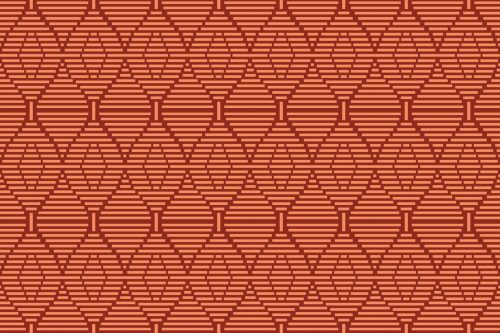Unveiling the potent influence of cultural trends on modern design, this article offers exclusive insights from industry experts. It dissects the symbiotic relationship between evolving societal norms and design innovation without excess jargon.
Trends Shape Fashion Design Choices
Fashion doesn’t exist independently; it’s a direct reflection of what’s happening in the world around us. Cultural and societal trends play a huge role in shaping design choices, and this became especially clear during the COVID-19 pandemic.
As lockdowns shifted our focus to comfort, major luxury brands found themselves struggling. Suddenly, flashy logos and high-status pieces felt out of place when people were prioritizing family, health, and security. Comfort-driven fashion took over, and loungewear dominated runways.
But fashion is cyclical, and it wasn’t long before luxury brands responded. Enter the revival of the old money aesthetic; a trend dripping in wealth, status, and high-end indulgence. It felt like a plea from luxury labels not to disappear. This old money narrative was reinforced through media like Saltburn, The Perfect Couple, and the revival of Gossip Girl. The message was clear: status mattered again, even if we hadn’t truly forgotten it.
This pattern isn’t new; fashion has always mirrored societal shifts. After World War II, Christian Dior’s iconic New Look emerged; a bold statement of excess featuring billowing skirts and structured silhouettes. After years of fabric rationing, this style was a clear declaration that scarcity was behind us. This was followed by the shift to pencil skirts in 1954 when women were deemed too independent. This style ensured that women often required the assistance of a gentleman for even the simplest tasks, like stepping up onto a curb.
We witnessed a similar shift post-COVID. After seasons of cozy loungewear, fashion embraced voluminous sleeves, oversized silhouettes, and statement pieces; a visual symbol of abundance and freedom. Now, as the world regains its footing, sleeker and more refined styles are reemerging; a reflection of focus and stability.
Fashion is never just about clothing; it’s a reflection of where we’ve been and where we’re going. As a designer, embracing these cultural influences allows me to create collections that feel meaningful and connected. Whether it’s luxury reasserting itself after a season of simplicity or colors drawn from the art world, fashion tells a story – and that story is always shaped by the world around us.
Heather Jude, Fashion Stylist and Designer
Sustainability and Diversity Drive Design
Cultural and societal trends play a significant role in shaping my design choices and creative process. As designers, it’s essential to stay attuned to the shifting values, attitudes, and behaviors of society, as these trends directly impact how people perceive and interact with design. For instance, in recent years, there’s been a strong movement toward sustainability and environmental consciousness, which influences my design choices in terms of materials, messaging, and overall brand tone. I incorporate eco-friendly elements, minimalism, and transparency in design to align with the growing preference for conscious consumption.
Additionally, the increasing focus on diversity and inclusivity pushes me to create designs that reflect a broader range of experiences, identities, and backgrounds. This means ensuring my designs represent various cultures, ethnicities, and body types, and create spaces for people to feel seen and heard.
Social media and digital communication trends also influence how designs are shared and consumed, pushing me to think about how designs can translate across platforms. Ultimately, I believe that staying aware of cultural shifts allows me to design more relevant, engaging, and meaningful experiences for my audience.
Georgi Petrov, CMO, Entrepreneur, and Content Creator, AIG MARKETER
Vietnamese Culture and Sustainability Influence Design
First off, the idea for Cafely came from my desire to bring the authentic and bold taste of Vietnamese coffee to more coffee lovers in the US. To further incorporate Vietnamese coffee culture into our business, we decided to work with homegrown farmers in Vietnam to responsibly source our beans.
Design-wise, our packaging highlights the name of each of our coffee products, which are all coffee blends that bring out the strong and bold flavors of Vietnamese coffee. Sustainability as a societal trend has also strengthened our goal to be more transparent with our customers about how we source our beans.
Furthermore, we emphasize that we are a Vietnamese brand by partnering with Vietnamese influencers and content creators focused on posting about Vietnamese culture-related topics. I find this makes us more authentic to our customers and even increases the value of our brand.
Mimi Nguyen, Founder, Cafely
Fashion Trends Shape Design Choices
Cultural trends greatly influence my design choices. Personally, when I was working with a women’s fashion retail client, I incorporated elements from the latest fashion week trends. I believe it’s crucial to stay updated and sensitive to societal shifts as they directly impact what resonates with audiences, thus shaping the creative process in Talks Media Group and Dusty Mag.
Jan Van Zeeland, Deputy Editor, Dusty Mag
Local Culture Shapes Design Choices
In a recent project, we incorporated cultural influences to make the design feel more connected to the audience. The client desired something that didn’t feel generic, so we examined local art, colors that were common in the community, and even certain textures that were popular in the area. For example, we used a color palette inspired by the local landscape and patterns you’d see in neighborhood art, which gave the design a relatable, authentic feel.
The end result was something that resonated because it wasn’t just visually appealing. It felt familiar to the people we were trying to reach. This project reminded me how a few well-chosen cultural details can make a brand feel like it really understands its audience.
Spencer Romenco, Chief Growth Strategist, Growth Spurt
Read more personal insights from our roundup experts on our design page.
Cultural and societal trends influence our design choices and creative process because we need to resonate with our audience. However, we always maintain a careful balance between adapting to trends and staying true to our brand identity and values.
For example, when minimalism became popular, we embraced clean lines and white space in our designs. But we made sure that our brand colors and typography remained prominent to reinforce our unique identity.
This approach not only ensured that our designs were visually appealing but also helped us stay authentic, blending current design trends with the core elements of our brand. By doing so, we effectively connected with the evolving aesthetic preferences of our audience while maintaining our brand’s authenticity.
Gursharan Singh, Co-Founder, WebSpero Solutions
Read more personal insights from our roundup experts on our design page.






